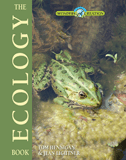Olinguito—The Last Carnivore?
Design in Nature
High in the Andes, a furry member of the raccoon family has lived quietly for centuries without detection. It is the first carnivore discovered in the Americas in more than three decades. Will it be the last? Why do creationists care?
“They stopped me in my tracks,” recalls biologist Kristofer Helgen about his surprise when opening a drawer full of mysterious, reddish-brown furs.1 Though housed in the Field Museum for more than 50 years, this species had never before been described in the scientific literature. He then led a field trip to Ecuador and confirmed they still live—the first member of the order Carnivora discovered in the Americas in more than three decades.
Dubbed the olinguito (Bassaricyon neblina), this newly described species is considered a kin to the raccoon. Unlike its North American cousins, however, it lives mainly on fruit. Dwelling high in the humid canopy of the Andean forests of South America, olinguitos venture out at night under the cover of darkness and thick fog. This explains why they eluded researchers for so long.
This odd-looking “bear cat,” weighing a mere 2 pounds (0.9 kg), is the smallest living member of the raccoon family. It lives at the highest elevation of any known olingo. Its thick, luxurious fur, with a regal golden hue, is probably its most distinctive trait.
Finding new mammals is exciting for creationists. It reminds us that God’s world is still a mysterious place, full of surprises. It also gives us another hint of the diversity and resilience of God’s creatures, created to glorify Him.
What are the chances of finding other large creatures? Should creationists even care?
What’s Yet to Be Found
We live in “a new age of discovery.” Dr. Helgen is just one of a legion of biologists who have devoted their lives to documenting and studying “the full richness and diversity of life on earth.” Over 400 mammal species have been described in the past two decades—one-tenth of all known mammals!
Creation biologists care. Each new discovery gives insights into the designs that enabled God’s creatures to diversify and fill the earth after the Flood. Genesis 1 tells us that God created organisms “according to their kind.” Later, every kind of air-breathing land animal was saved on the Ark and diversified into the variety of creatures on earth today. How did these animals, such as raccoons, diversify and fill so many different niches?
Dinosaurs, woolly mammoths, and many other species may be extinct, but what are the possibilities that other varieties of creatures are alive and just waiting to be uncovered for further study?
That depends on the size of the creature and its ability to hide. Varieties of many small animals, such as insects and lizards, are discovered all the time. Large creatures are much less common. Some mammals, such as bats and monkeys, find it easy to evade detection, so they are just now coming to light. Yet a species of ox weighing nearly 200 pounds (100 kg) was discovered in the mountains of Vietnam in 1992 and not captured live until 2010.
Stories of strange, even mythical, creatures have sometimes turned out to be the real deal, too. Mountain gorillas and giant squid are just two examples.
A recent story comes from the mountains of the Philippine’s Luzon Island. Locals had long claimed that a large lizard was living in the trees. It was finally spotted and described for science in 2011. This fruit-eating, tree-dwelling member of the varanid family, which reaches lengths of 7 feet (2 m) and weighs up to 22 pounds (10 kg), was christened the golden spotted monitor (Varanus bitatawa).
Though abominable snowmen in the Himalayas or “Nessies” in Loch Ness are not likely, some serious researchers still pursue creatures reported in indigenous tales. For instance, cultures in places like Papua New Guinea and Africa tell stories and depict mysterious creatures in such fine detail that some of these traits were later confirmed from the fossil record. Knowing the finer details of a creature before scientific research confirms them is consistent with a live encounter. Might these stories be true?
The Discovery Continues
Around 1.4 million species of animals have been identified by scientists so far, and nearly 15,000 are added to the list each year. Most of these new species—around 10,000—are insects. Only a few hundred are vertebrates, such as fish, reptiles, and birds. Mammals account for two or three dozen each year, mostly rodents and bats.
In many cases, “new species” are actually old species that scientists split in two. But occasionally new species are sighted in the field and then described in the scientific literature. The olinguito was just one of many new treasures described in 2013.

The Cambodian tailorbird (Orthotomus chaktomuk, photo on left) was first spotted in Cambodia’s biggest city, Phnom Penh. Photo: James Eaton. This wafer trapdoor spider (Fufius minisculus, center photo) is one of three new trapdoor spiders discovered in Brazil. Photo: Rogério Bertani. The Bazinga jellyfish (Bazinga rieki, photo on right) was discovered in New South Wales, Australia. It is unlike any known family of jellyfish.
What’s Lost
Our forefathers who left Babel encountered many amazing species that are now extinct, such as mastodons and saber-toothed cats. As a result of their extinctions, much biological variety has disappeared. Unique designs that once spoke of the Creator’s ingenuity are gone forever.
From a biblical perspective, it’s a sad thing to realize how many creatures have been (and are being) lost to extinction.
This is a sad loss, and it continues. For example, Australia’s gastric brooding frog (Rheobatrachus sp.) was the only known frog whose offspring were designed to develop in their mother’s stomach without being digested. The last time they were seen in the wild was 1981 and the last captive frog died in 1985.
From a biblical perspective, it’s a sad thing to realize how many creatures have been (and are being) lost to extinction. The greatest loss is the testimony to God’s infinite creativity, which designed the mechanisms that produced such rich biodiversity. Is it possible that this variety is a way for Him to reveal new things about His creativity that we would not otherwise reflect upon?
We should thank God for showing us His invisible attributes in the visible creation (Romans 1:20), and learn to appreciate the beauty and diversity that is so inspiring to both believer and nonbeliever alike. And we should be careful never to take His creation for granted. Who knows what insights remain for us to learn about God’s handiwork through the creatures we encounter?
Answers Magazine
January – March 2014
Placed safely in our solar system’s “goldilocks zone” and engineered with the perfect balance of atmosphere, chemicals, and water, our earth was miraculously formed to be inhabited (Isaiah 45:18). This issue examines the earth’s unique suitability for life. We’ll also investigate what seminaries are actually teaching our pastors, the possibility that viruses could be beneficial, and more.
Browse Issue SubscribeFootnotes
Recommended Resources

Answers in Genesis is an apologetics ministry, dedicated to helping Christians defend their faith and proclaim the good news of Jesus Christ.
- Customer Service 800.778.3390
- © 2024 Answers in Genesis





